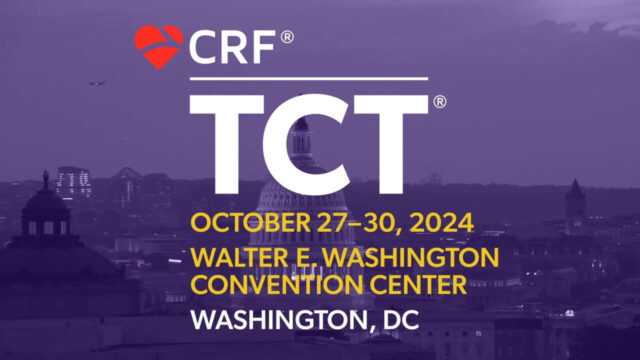Severe aortic stenosis is increasingly common, especially in developed countries, and the current treatment of choice is either SAVR or TAVR, according to risk.

However, there is a group of asymptomatic patients whose treatment remains controversial. Even though some studies, such as the RECOVERY and the AVATAR, suggest surgery for this group, the indication is still debatable.
Also, there is a subgroup of asymptomatic patients presenting myocardial fibrosis detected by cardiac magnetic resonance, which has been identified as a predictor of bad evolution in terms of cardiac failure and mortality.
The prospective multicenter randomized EVOLVED included 224 patients with severe asymptomatic aortic stenosis and myocardial fibrosis confirmed by CMR with ≥ 50% ejection fraction. 113 received early SAVR or TAVR, and the rest optimal medical treatment (OMT).
The primary outcome was a composite of all cause death and aortic stenosis related hospitalization.
Read also: TCT 2024 | Asymptomatic Severe Aortic Stenosis: What Should Be our Approach?
Both groups were similar: mean age 75, mostly men and no significant differences in hypertension, dyslipidemia, diabetes, stroke, peripheral vascular disease, CABG or PCI. Neither were there differences in medical treatment.
Eco-Doppler peak aortic velocity was 4.3 m/s, mean gradient 45 mmHg, aortic valve area (AVAO) 0.8 cm². CMR showed 28% of patients presented bicuspid valves; left ventricular max index resulted 85 g/m², LV diastolic volume 75 ml/m², LV systolic volume was 50 ml/m², ejection fraction 68% and 10% had prior MI.
75% of patients received surgical aortic valve replacement, while the rest were treated percutaneously with TAVR.
There were no significant differences in primary end point (18% vs. 23%; hazard ratio: 0.79 [CI 95%, 0.44-1.43]; P = 0.44) between the early treated and those receiving OMT. Neither were there differences in all-cause mortality (14% vs. 13%; hazard ratio: 1.22 [CI 95%, 0.59-2.51]) or aortic stenosis related hospitalization (6% vs. 17%; hazard ratio: 0.37 [CI 95%, 0.16-0.88]). Early intervention was associated to improved functional class at 12 months.
Read also: Evolution of Small Balloon-Expandable Valves.
At one-year follow-up, 28% of patients undergoing OMT required aortic valve intervention, which increased to 80% at 4 years.
Conclusion
In patients with severe asymptomatic aortic stenosis and myocardial fibrosis, early intervention of the aortic valve showed no effects in all-cause mortality or aortic stenosis related hospitalization. This study presents a large confidence interval in primary outcome, which is why further research is required for definite confirmation of these findings.
Original Title: Early Intervention in Patients With Asymptomatic Severe Aortic Stenosis and Myocardial Fibrosis. The EVOLVED Randomized Clinical Trial.
Reference: Krithika Loganath , et al. JAMAdoi:10.1001/jama.2024.22730.
Subscribe to our weekly newsletter
Get the latest scientific articles on interventional cardiology





